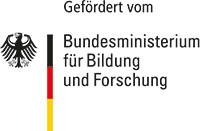LOCLIM 3 - Local climate change in 3 cities (Cairo, Nairobi, Istanbul)

Projektbeschreibung
In den Ballungszentren Kairo, Nairobi und Istanbul steigt gemeinsam mit der Einwohnerzahl auch die Temperatur, denn Baumaterialen wie Asphalt und Zement speichern die Wärme und Wasser ist nicht mehr ausreichend vorhanden. Die dicht bebauten Gebiete werden zu städtischen Wärmeinseln mit einer deutlich höheren Temperatur als in den sie umgebenden schwach besiedelten oder agrarischen Flächen. Durch den Klimawandel verschärft sich dieser Effekt.
Ziel effizienter stadtplanerischer Maßnahmen muss es sein, auf diese Herausforderungen so zu reagieren, dass die Städte lebenswert bleiben. Stadtplaner der Universitäten Kairo und Jomo Kenyatta (Kenia) sowie Meteorologen der Technischen Universität Istanbul und der Freien Universität Berlin haben es sich daher zur Aufgabe gemacht, gemeinsam mit Akteuren vor Ort Empfehlungen für die Stadtverwaltungen zu entwickeln, wie die Temperatur in den Städten reduziert werden kann.
Von der Freien Universität Berlin beteiligen sich Prof. Dr. Ulrich Cubasch, Dr. Ines Langer und Prof. Dr. Sahar Sodoudi, vom Institut für Meteorologie an dem Projekt. Sie bringen ihre Expertise und die technische Ausstattung zum Erstellen von Klimamodellen ein.
LOCLIM 3 ist Teil des EU-Projektes ERAfrica, das die Zusammenarbeit in Forschung und Wissenschaft zwischen der EU und afrikanischen Ländern fördert. Von deutscher Seite wird das Projekt vom Bundesministerium für Bildung und Forschung gefördert, das auch LOCLIM 3 mitfinanziert. Daneben kommen Gelder aus den an ERAfrica beteiligten ägyptischen, kenianischen und türkischen Ministerien. Die Koordination von LOCCLIM 3 hat die Fakultät für Stadtplanung der Universität Kairo inne.
Hervorgegangen ist LOCLIM 3 aus einem von der Freien Universität Berlin organisierten, DAAD-geförderten Workshop am Campus El Gouna der Technischen Universität Berlin im Jahr 2013. Die Teilnehmer aus Ägypten und Deutschland installierten eine Messstation und führten Messungen durch, deren Ergebnisse die Stadt El Gouna nutzen kann, um sich an die meteorologischen Gegebenheiten anzupassen.
Summary
Cities face significant impacts from climate change now and into the future (Hallegatte, 2009). These impacts have potentially serious consequences for human health, lively-hoods, and assets, especially for the urban poor informal settlements. Climate change (IPCC, 2013) impacts range from an increase in extreme weather events like hotter temperatures or flooding and effects public health (Matzakaris, 2001). Climate change is a serious challenge for cities around the world, particularly in developing countries where urbanization is happening at neck-breaking speed. It threatens to increase vulnerabilities, destroy economic gains, and hinder social and economic development. The urban poor will bear the brunt of its effects since they live and work in informal settlements and will be more exposed to hazards (Meyer, 1999). Building resilience and adapting to climate change is increasingly a very high priority for cities. Besides mitigation, on which efforts have largely focused in the past, cities should play today a larger role in adaptation.
This study on climate change adaptation in cities is intended to offer mayors and other city officials, in developing countries, practical guidance on how to respond to the challenges of climate change adaptation in their cities. It provides a comprehensive overview of key climate adaptation issues that are relevant to cities, offers examples of good practices and successful experiences, and is a useful guide to other available resources and policy tools on the topic. Therefore an interdisciplinary team is necessary to search on climate change adaption as well as on Urban Heat Island (UHI) mitigation strategies in cities. Climate researchers in this project have experience on how to analyses climate data as well as on simulation with meso-climate models. But they need inputs and also discussion with the urban and landscape planners and architects regarding the building structure, material, and the potential change of the city structure. The results of the meso-climate simulations for the urban area in the current situation and for the future will be discussed. Therefore it is important to work together with the stakeholders, urban and landscape planners from the city to find an optimal solution for a sustainable and climate change oriented city for the future. The advances of LOCLIM3 is to analyse and simulate the local climate for Istanbul, Nairobi and Cairo in real time as well as for the future with a high spatial resolution regarding different adaption strategies. These cities have different population, land use, urban structure, climate characteristics (http://www.worldpopulationstatistics.com/cairo-po-pulation-2013/) as well as urban form.
The first goal of this project is to estimate the local climate change in these cities till 2090 using the regional climate models.
The second goal is to check different climate change adaptation strategies like landscape and land use changing, climate oriented urban planning and urban design with a meso-scale model with urban parameterization.
The third goal is the discussion of climate results (from now up to 2090) and useful adaption strategies for these cities with the project partners as well as with the national stakeholders, architects and landscape planners, which will be invited during the project discussion.
For validation of the simulations for these cities, the project will use the permanent weather stations of the national weather service. However, these networks were not dense enough; therefore, a meteorological measuring campaign will support the temporal and spatial density of data, like temperature, rel. humidity and wind speed. These mobile measurements will be operated by students from each city with the guide of German meteorological students. This will focus the great interdisciplinary research for young scientist from different countries and different research groups to develop sustainable climate efficient cities.